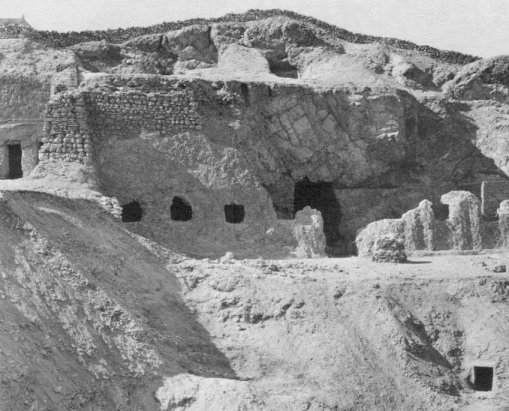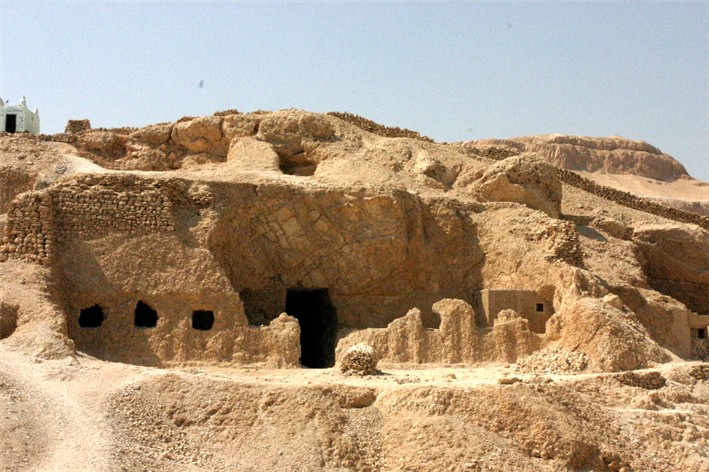 |
Senenmut |
last update:
01.01.2010
|
Tomb TT71
|
The first tomb of the Senenmut on the hill "Sheikh Abd el-Qurna" was opened 1930 by
E. H. Winlock. However, already 100 years earlier the tomb was
accessible and for a long time the target of numerous "investigations".
|
| In 1920 Norman de Garis Davies had discovered an
ostracon in the forecourt of TT71 (see below, photo by H. Burton), that contained the date "year 7, 4. Month of the Peret (sprouting), day
2" and the information "Commencement of the work in this
tomb".
|
| Among all other finds in and around the tomb of
Senenmut, TT71, this ostracon was given the no. 62. Hayes, who has published this ostracon
in 1942 (Hayes, W. C., Ostraka and name
stones from the tomb of Sen-Mut (no. 71) at Thebes, 1942), assumed that the date refers to the first work done on the virgin rock. |

| Ostracon no. 62, limestone, hieratic text, black ink;
14.5 x 10 x 2.5 cm
|

|
Above, the transcription of the hieratic text into hieroglyphic writing by
Hayes
(1942). The numbers on the right and left correspond with the lines of the text,
i.e. as on the ostracon the original text the upper two lines are written
upside down.
|
|
Hayes has translated the text as follows:
|
|
1 - Regnal Year 7, Month 4 of Peret, Day 2. Beginning of the work
|
|
2 - in the tomb on this day: 11 masons,
|
|
3 - who did 1 rod in depth by 6 rods in width,
|
|
4 - besides 1 cubit in going toward the interior.
|
|
5 - Those who cut the measure: 30 men, who did
|
|
TT71 was cut T-shaped into the rock (see floor
plan). In front of it a forecourt (approx. 40 m broad and 25 m deep) was
built (see photo below). To overcome the steepness of the hill an artificial terrace was
built across the forecourt. A ramp connected the two parts of the
forecourt. Hayes assumed that the material used to fill the terrace was
the debris from cutting the tomb.
|
 |
 |
| above the front view of TT71 shortly after the tomb of his
parents (the entrance is shown in the lower right corner of the picture)
has been discovered (photo Dorman, 1991);
|
above a photo from the front view as it looks
today (December 2001), taken from a similar position like the left
picture;
|
|
With the beginning of the work on tomb TT71 the entrance to the tomb of his parents,
which was discovered
under the forecourt by A. Lansing and W. Hayes in 1936, was
covered at the same time. Hayes made a clear difference between
finds discovered in the forecourt and finds discovered below TT67. According to Hayes ostracon no. 62
has been found in the forecourt of TT71 - thus, the ostracon has gotten into the
debris after the tomb of his parents had been closed. |
| As a result, the mother of Senenmut, Hatnefret, who died
after his father Ra-mose, must have died not later than or was at least buried in Year
7 because the tomb was not accessible afterwards. Inside the tomb
several earthenware bowls were found among them two with the seal of the
"Good Goddess Maat-Ka-Ra", what means that she already had
accepted the title "Pharaoh".
|
Thus, this ostracon supplies:
- first of all, a date, from when the tomb of his parents was no longer
accessible,
and
-secondly, together with the finds inside the tomb of his parents (which mention year 7 as the highest date) this
ostracon gives a reference date for the accession of Hatshepsut to king (see Pharao).
|
|



